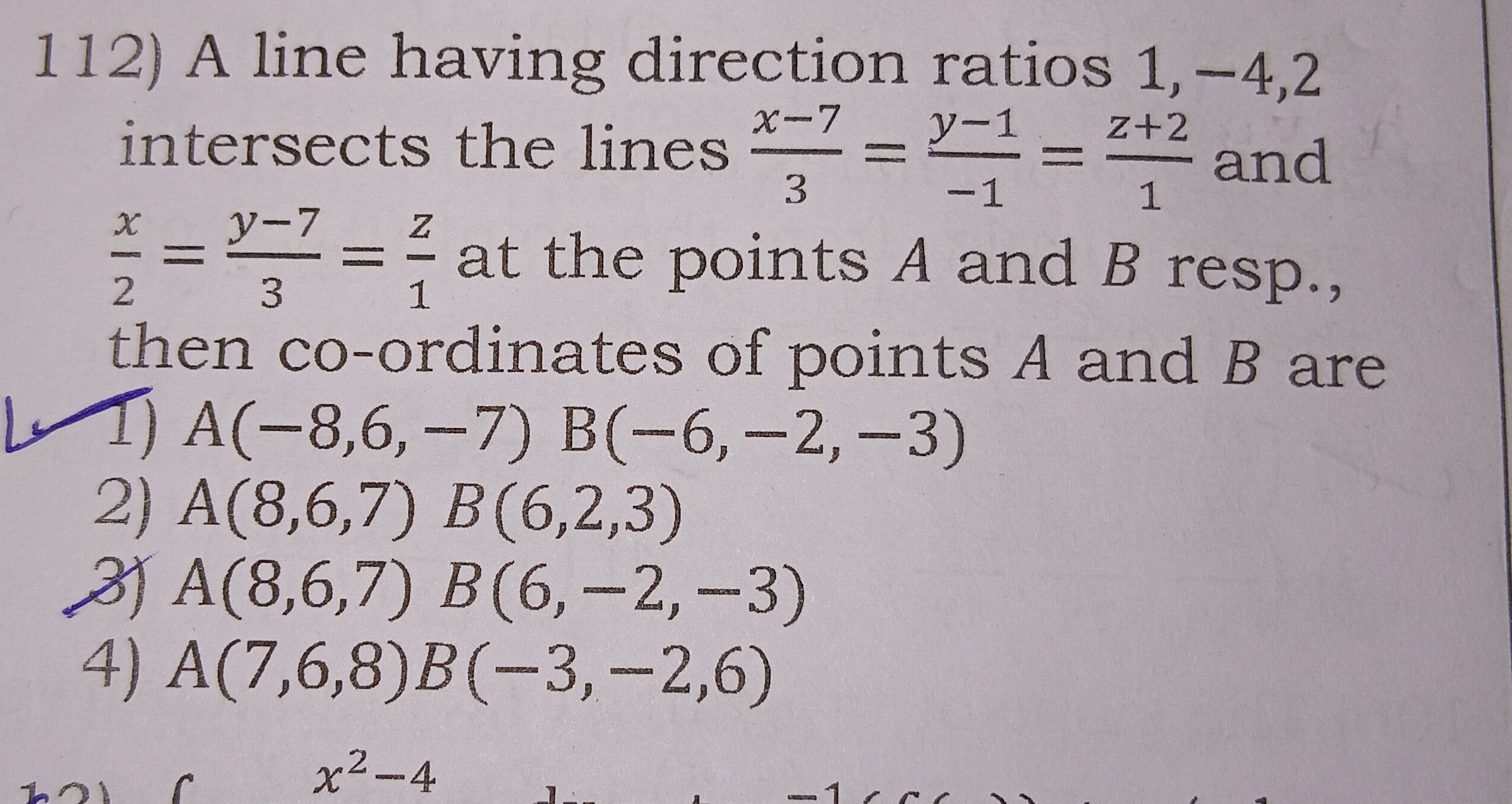Question
Question: A line having direction ratios 1, -4,2 intersects the lines $\frac{x-7}{3}=\frac{y-1}{-1}=\frac{z+2}...
A line having direction ratios 1, -4,2 intersects the lines 3x−7=−1y−1=1z+2 and 2x=3y−7=1z at the points A and B resp., then co-ordinates of points A and B are

A
A(-8,6, -7) B(-6, -2, -3)
B
A(8,6,7) B(6,2,3)
C
A(8,6,7) B(6,-2,-3)
D
A(7,6,8)B(-3,-2,6)
Answer
A(-8,6, -7) B(-6, -2, -3)
Explanation
Solution
Let the line with direction ratios (1,−4,2) be L. It meets:
-
Line 1: 3x−7=−1y−1=1z+2=μ, so
A=(7+3μ,1−μ,−2+μ). -
Line 2: 2x=3y−7=1z=λ, so
B=(2λ,7+3λ,λ).
Since A and B lie on L, the vector AB must be parallel to (1,−4,2). Hence, there exists k such that:
B−A=k(1,−4,2).Calculate:
B−A=(2λ−(7+3μ),(7+3λ)−(1−μ),λ−(−2+μ)).This gives:
⎩⎨⎧2λ−7−3μ=k(i)6+3λ+μ=−4k(ii)2+λ−μ=2k(iii)From (i): k=2λ−7−3μ.
Substitute into (iii):
2+λ−μ=2(2λ−7−3μ)=4λ−14−6μ.Simplify:
2+λ−μ−4λ+14+6μ=0⟹−3λ+5μ+16=0,or
3λ−5μ=16.(A)From (ii):
6+3λ+μ=−4(2λ−7−3μ)=−8λ+28+12μ.Simplify:
6+3λ+μ+8λ−28−12μ=0⟹11λ−11μ−22=0, λ−μ=2.(B)From (B): λ=μ+2. Substitute into (A):
3(μ+2)−5μ=16⟹3μ+6−5μ=16, −2μ=10⟹μ=−5.Thus, λ=−5+2=−3.
Substitute back to find coordinates:
A=(7+3(−5),1−(−5),−2+(−5))=(−8,6,−7), B=(2(−3),7+3(−3),−3)=(−6,−2,−3).